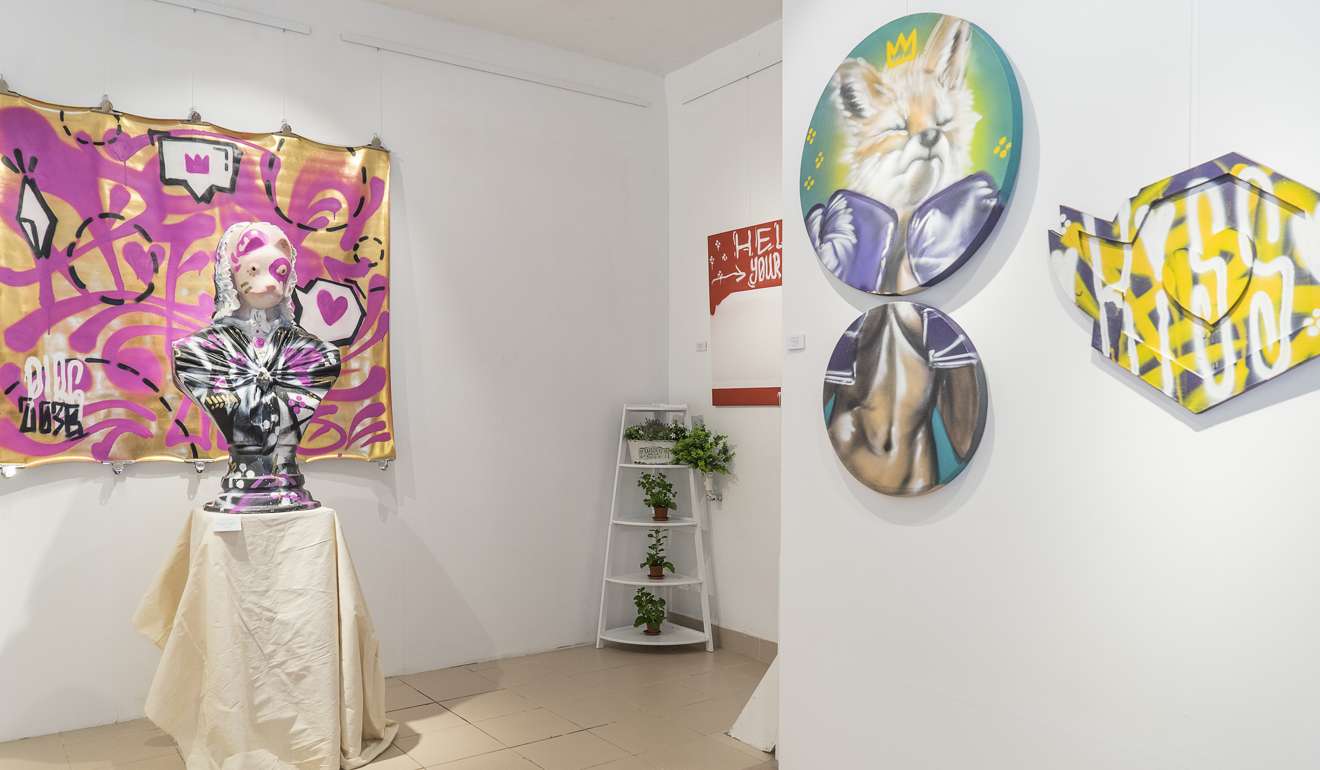
Taipa Village in Macau emerges as a top spot for foodies and art lovers
Once a bustling fishing village, this picturesque little hideaway has become a favourite destination for those in search of mouth-watering dishes, festive activities and unusual art exhibitions
Tucked between the luxurious high-rise resorts of Cotai and the residential towers of Taipa is a tiny aldeia, or village, that would not look out of place in Alentejo or the Algarve – except, of course, for the Chinese characters on many of the signs.
Taipa Village, once a bustling fishing village, long ago went into a slumber, only starting to awaken about 40 years ago with the arrival of Cozinha Pinocchio.
When the restaurant first opened, Pinocchio was an unpretentious little open-air eatery located at the end of a dark alley off Rua da Cunha serving mouth-watering Macanese dishes that were based on time-honoured family recipes.

Other eateries came and went. More and more shops selling cookies and dried meats opened. Rua da Cunha became a popular destination for day trippers from Hong Kong on weekends.
But things remained pretty much unchanged until acclaimed Portuguese chef Antonio Coelho – who previously had a successful and critically acclaimed restaurant in Coloane – opened an eponymous eatery in a beautifully renovated shop house in the village in 2008.
Taipa Village, as the saying goes, has never been the same since.
Starbuck’s opened shortly thereafter, followed by Casa de Tapas, a stylish Spanish restaurant, in 2013.
Slowly but surely, Taipa Village is gaining the critical mass needed to be considered a foodie destination in its own right.
Three of its restaurants have been recommended by Michelin – Antonio, O Santos, and Café Leon.
At least four food and beverage outlets have opened in the last six months. Restaurante Portugues Pescador and a Lord Stow’s Bakery outlet opened in late 2016. King’s Lobster and DiGreen opened in January. More food and beverage outlets are on the way, including two Italian restaurants and
Tom N Toms, a Korean coffee house chain. A subsidiary of real estate fund manager Sniper Capital, Taipa Village Destinationwas established in 2015 to help promote the village to local and international visitors.
Management has a huge passion to promote this area. Taipa Village is a very unique and colourful area that is full of history
The company has been purchasing old properties with an eye to renovating them and leasing them to both retailers and food and beverage outlets. It has acquired more than 10 properties so far, and three of them – Antonio, Casa de Tapas, and Portugalia – are already up and running.
More outlets are about to open for business, and the company is looking for business partners to occupy the remaining spaces it has acquired.
“Our goal is not only to promote our own businesses, but also to cooperate with other merchants with an objective of attracting more visitors to Taipa Village,” says Pamela Chan, senior marketing manager, Taipa Village Destination. “Management has a huge passion to promote this area. Taipa Village is a very unique and colourful area that is full of history.”

other reasons to visit the neighbourhood. Taipa Village Art Space, showcasing artwork by local artists, opened late last summer, and O Santos opened a gift shop selling Portuguese products early this year.
With its yellow stucco façade, the gracefully elegant Our Lady of Carmo Church sits atop a hill, overlooking Taipa Village to the north and Cotai across a lagoon full of water lilies to the south.
Several other buildings from the colonial era have been tastefully renovated and given a new lease on life.
Carmo Hall, a former power plant, has been turned into a multi-purpose activities centre, where performances, recreational events, and talks can be held.
The former home of the Municipal Commission of the Islands has been turned into
the Museum of Taipa and Coloane History.
A collection of pastel green bungalows that once housed senior civil servants has been turned into the Macanese Living Museum. In addition to indoor exhibitions within the houses, there is a large outdoor space where festive activities can be held. As if that were not enough, Chinese temples four centuries old also dot the neighbourhood.
